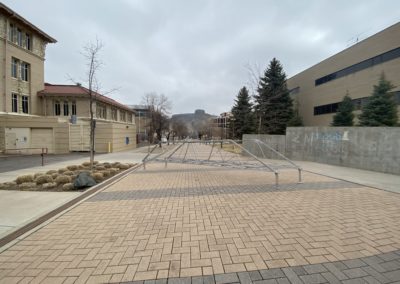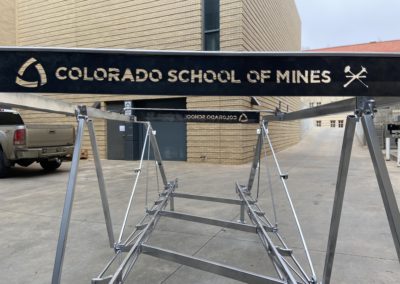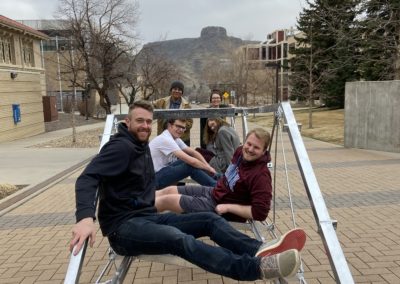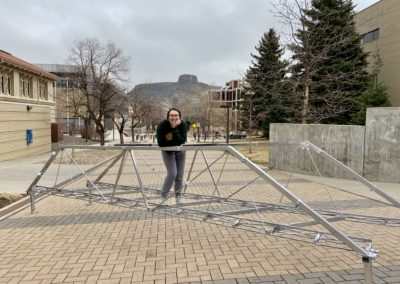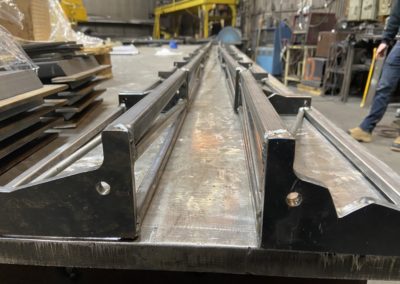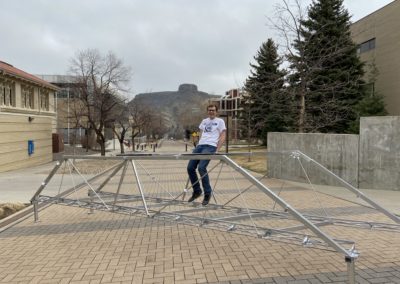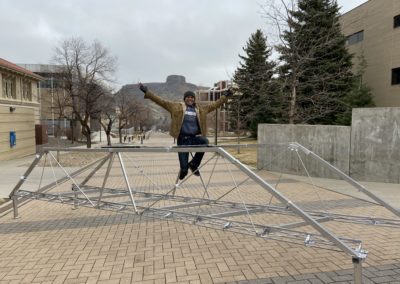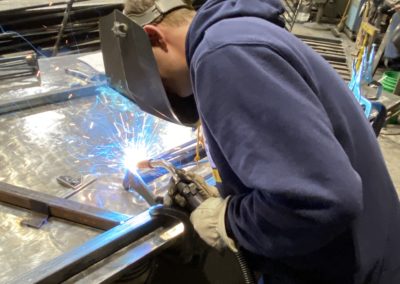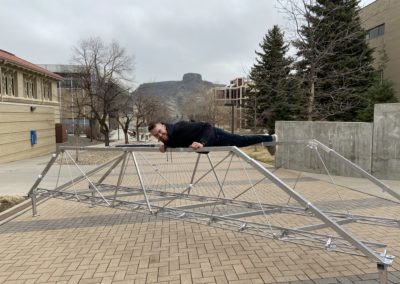AISC Steel Bridge Competition Team 2 – Keep it Civil
Overview
Our team was tasked with designing and building a bridge for the 2020 AISC steel bridge competition. Every year there are some unique challenges posed as a part of the competition. This year, the problem was to make a 20-foot long bridge with sides that were offset from one another by 18 inches. Scoring of the competition is based on weight of the bridge, the deflection under a given load case, construction speed, efficiency, and aesthetics. A few of the other design parameters included making sure every piece fit into a 4” by 6” by 42” box, leaving a dimensioned opening throughout the entire length of the bridge, being able to handle a 50-pound horizontal force, and constructing the bridge from our fabricated members in under 30 minutes.
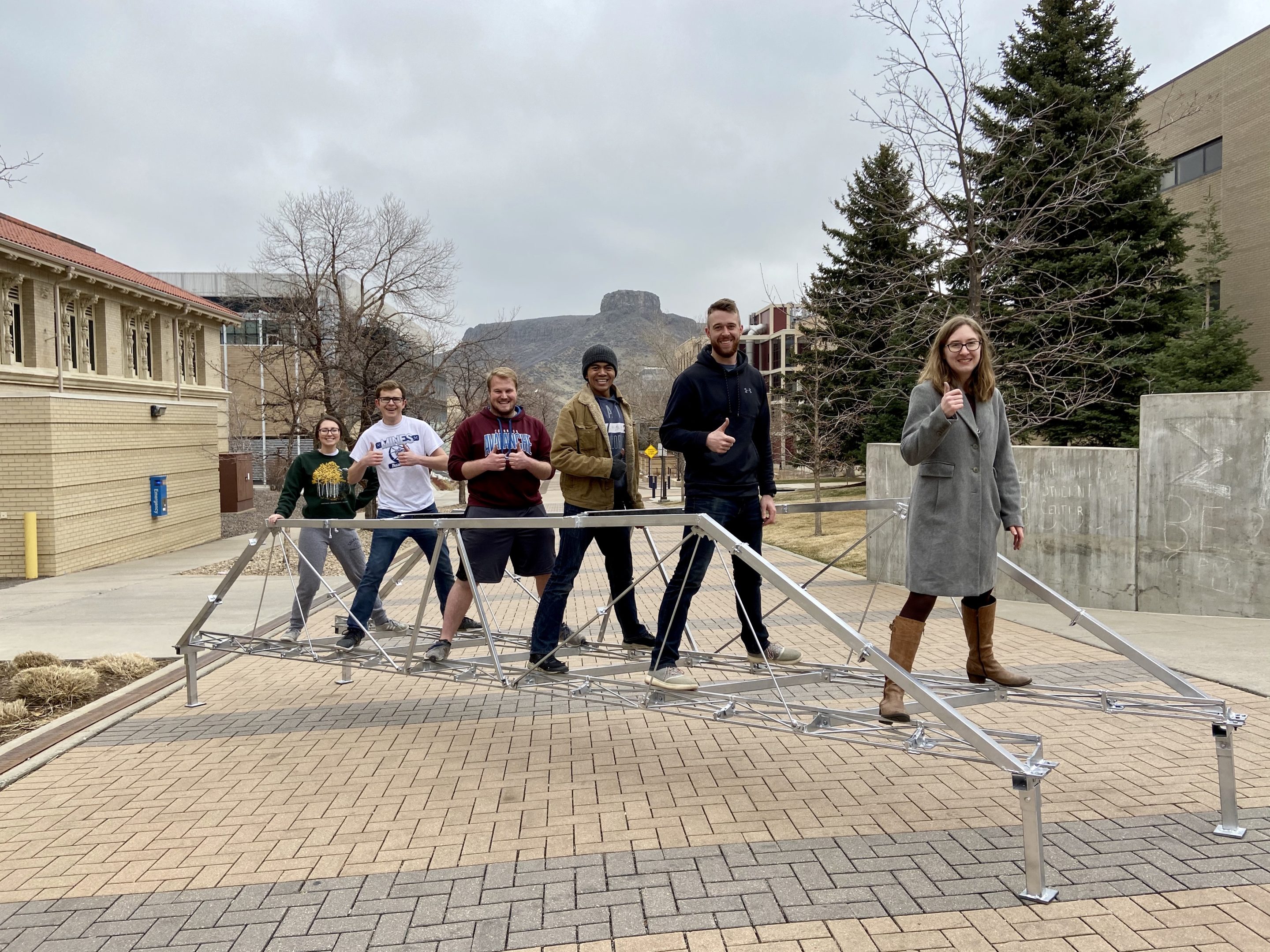
Team Members
- Clara Berner
- James Doyle
- Eli Evers
- Gabriel Hegarty
- Neil Isales Jr.
- Hayley Siedlik
The Client
- Kiewit
Acknowledgements
We would like to acknowledge our clients Brenna Svoboda and Marcus Duren from Kiewit as well as our Project Advisors Jeffrey Holley and David Grimm for helping us during the design process. We would also like to acknowledge Dave Genova and the rest of Zimkor LLC. for donating our steel and helping us fabricate our bridge. Finally we would like to acknowledge Kiewit for donating to our project.
Elevator Pitch
Design Approach
The two semesters of Senior Design were divided into the Design Stage, and the Fabrication Stage. Three members, Elijah Evers, Clara Berner, and James Doyle were designated to oversee initial mock designs and models in RISA. Weekly meetings were scheduled with the Client either through Skype or in-person where concepts and design details were discussed and modified.
A more detailed summary of steps with corresponding Figures were as follows:
First Semester:
Step 1: Reading the Rules and Regulations as well as familiarizing the team with the Bridge Envelope to fully understand design constraints.
Step 2: Brainstorming what types of bridges to design. These involved considering an over truss, under truss, or a deck bridge.
Step 3: Breaking ideas down into a few designs and then modeling in RISA to test feasibility of each design.
Step 4: Focusing in on one design and modeling all load types in RISA while adjusting and refining design accordingly.
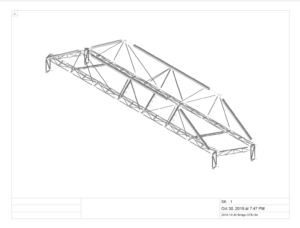
Step 5: Brainstorming connections and break points for each piece of the bridge and drawing up detailed CAD drawings of connections and details.
Step 6: Creating a detailed inventory of steel parts and amounts needed including extra steel to account for fabrication waste and mistakes.
Step 7: Ordering steel from Dave at Zimkor before Thanksgiving
Second Semester:
Second Semester consisted of fabrication. Once pieces were cut, it was a somewhat cyclical process. This process consisted of focusing on a singular bridge part, conceptualizing and planning with Dave how to fabricate it, then adjusting the design as the team further detailed every dimension of the piece, and finally building the part. For example, a stringer piece may have been 34.5 inches long, but to cut the bottom connecting square HSS, this number had to be divided in two and the width of one and one half plates had to be subtracted. Additionally, as one part got adjusted in response to fabrication challenges, other parts and dimensions would have to change as well.
Steps included:
Step 1: Formulating all specific dimensions and cutting pieces to exact size.
Step 2: Water jetting the triangle plate connections for the stringers.
Step 3: Creating several jigs for repeating stringer pieces, taking into account the 4 – 17.5” pieces, and 4 – 34.5” pieces and the 8 – 34” pieces.
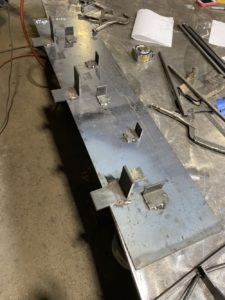
Step 4: Conceptualizing some connections that had yet to be designed such as the footer connection to the stringer.
Step 5: Calculating the angle of cut for upper truss connections and building upper truss pieces
Step 6: Calculating angle of cut for diaphragms and fabricating them
Step 7: Constructing bridge and then marking out precise lengths for upper truss diagonals.
Step 8: Grinding down welds, adjusting skewed members or offset bolt holes, and general fabrication clean-up
Step 9: Painting bridge chrome
Step 10: Practicing builds to succeed in building the bridge in under 30 minutes for Spring Fest.
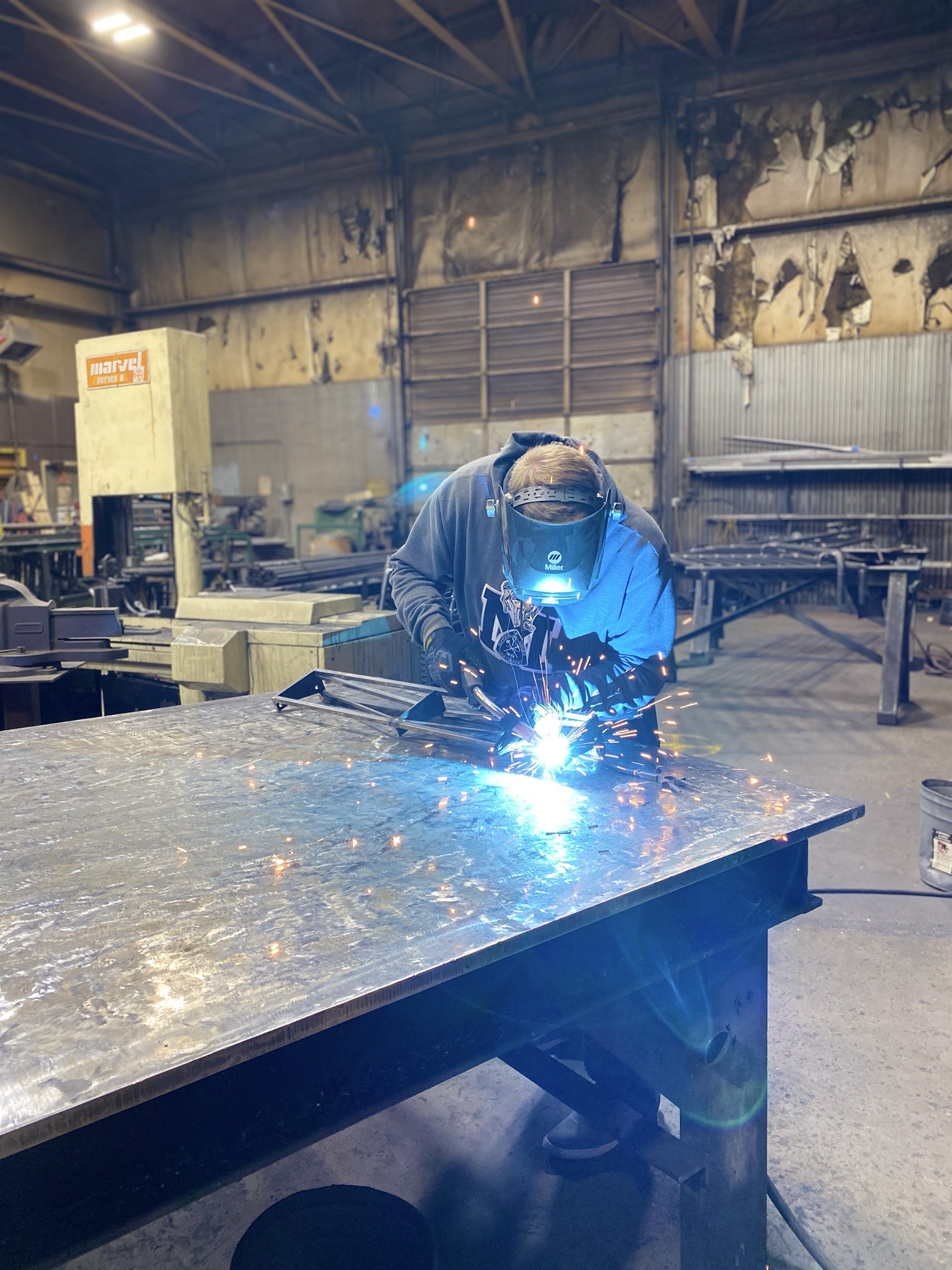
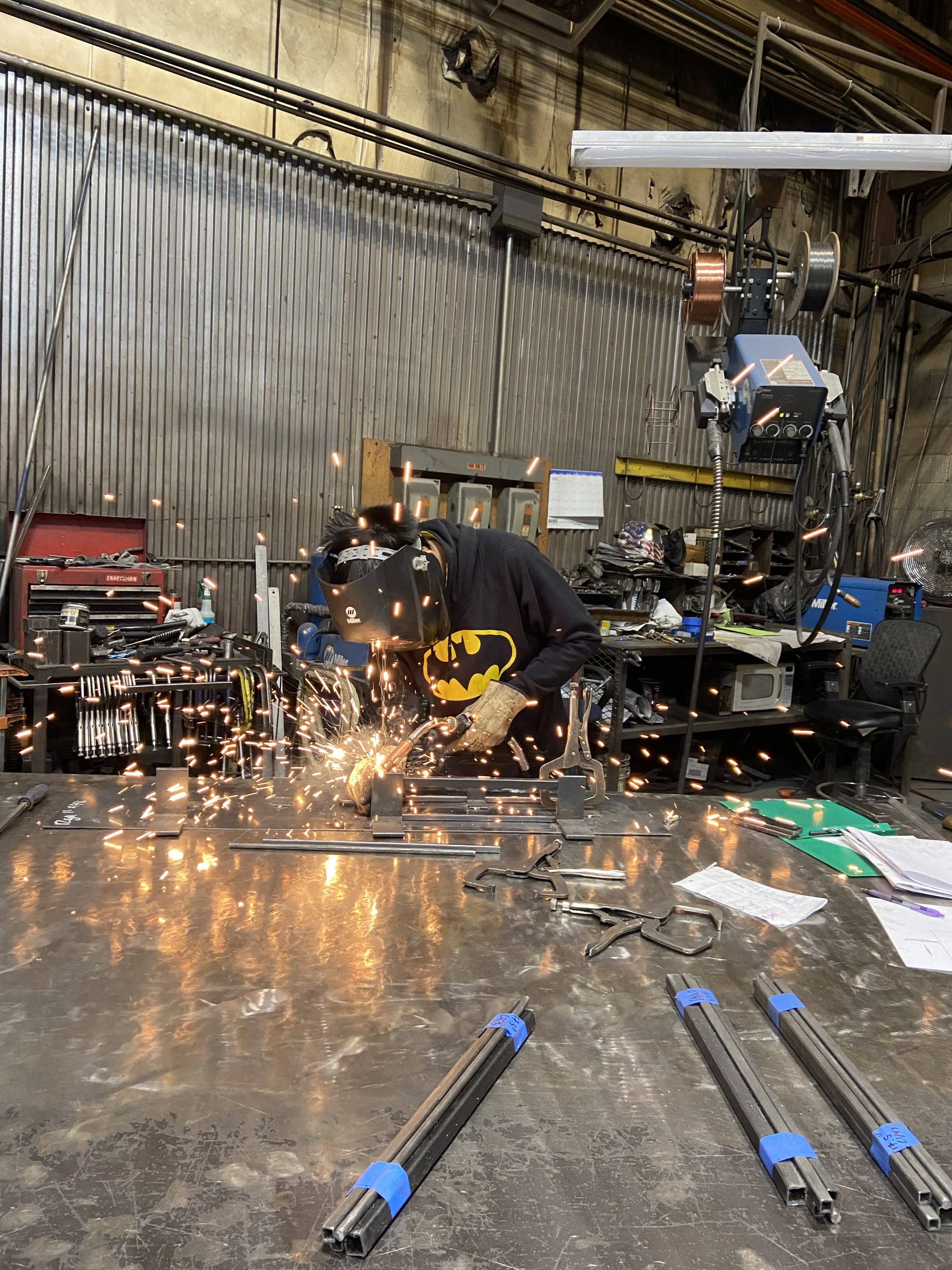
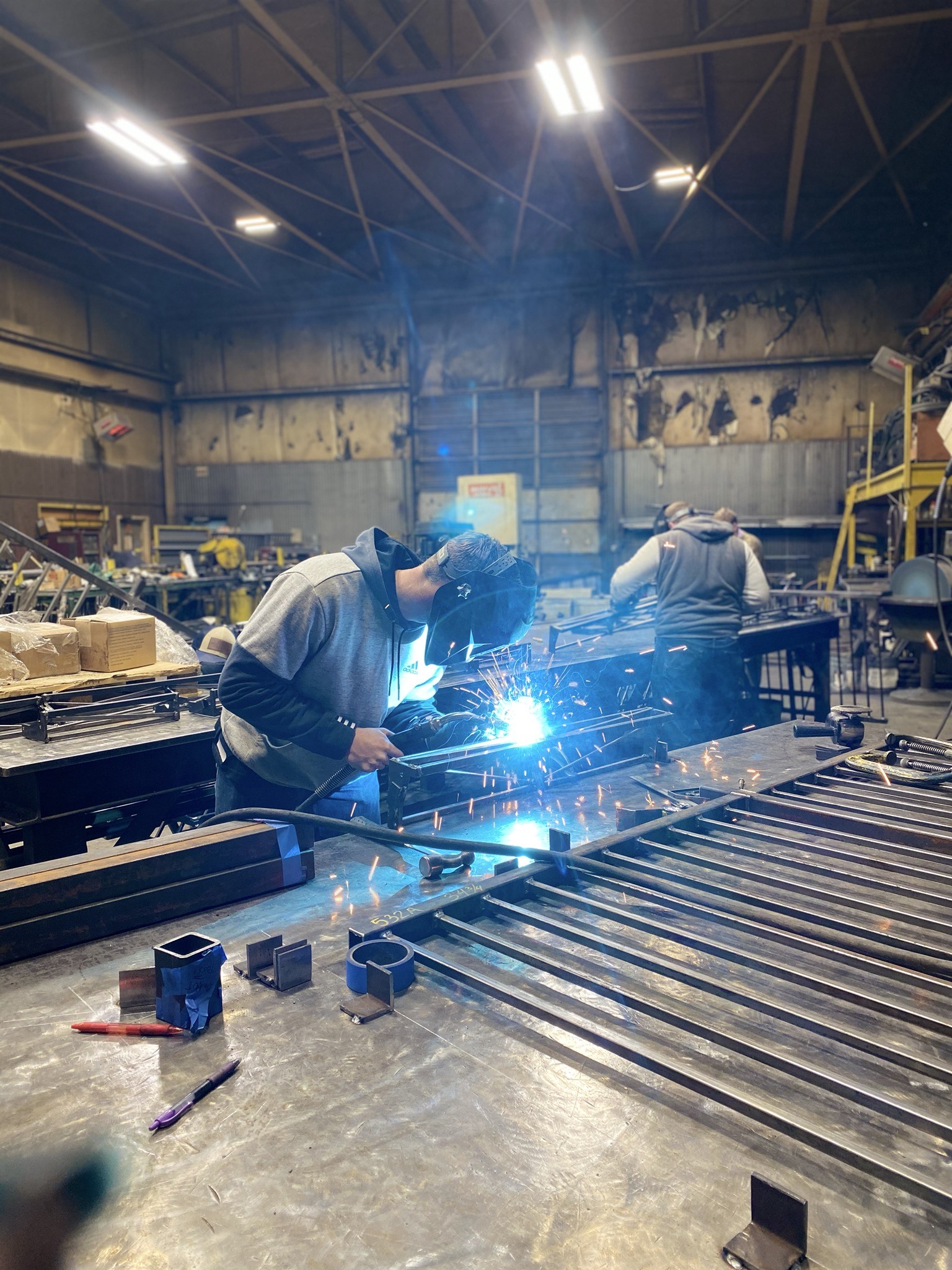
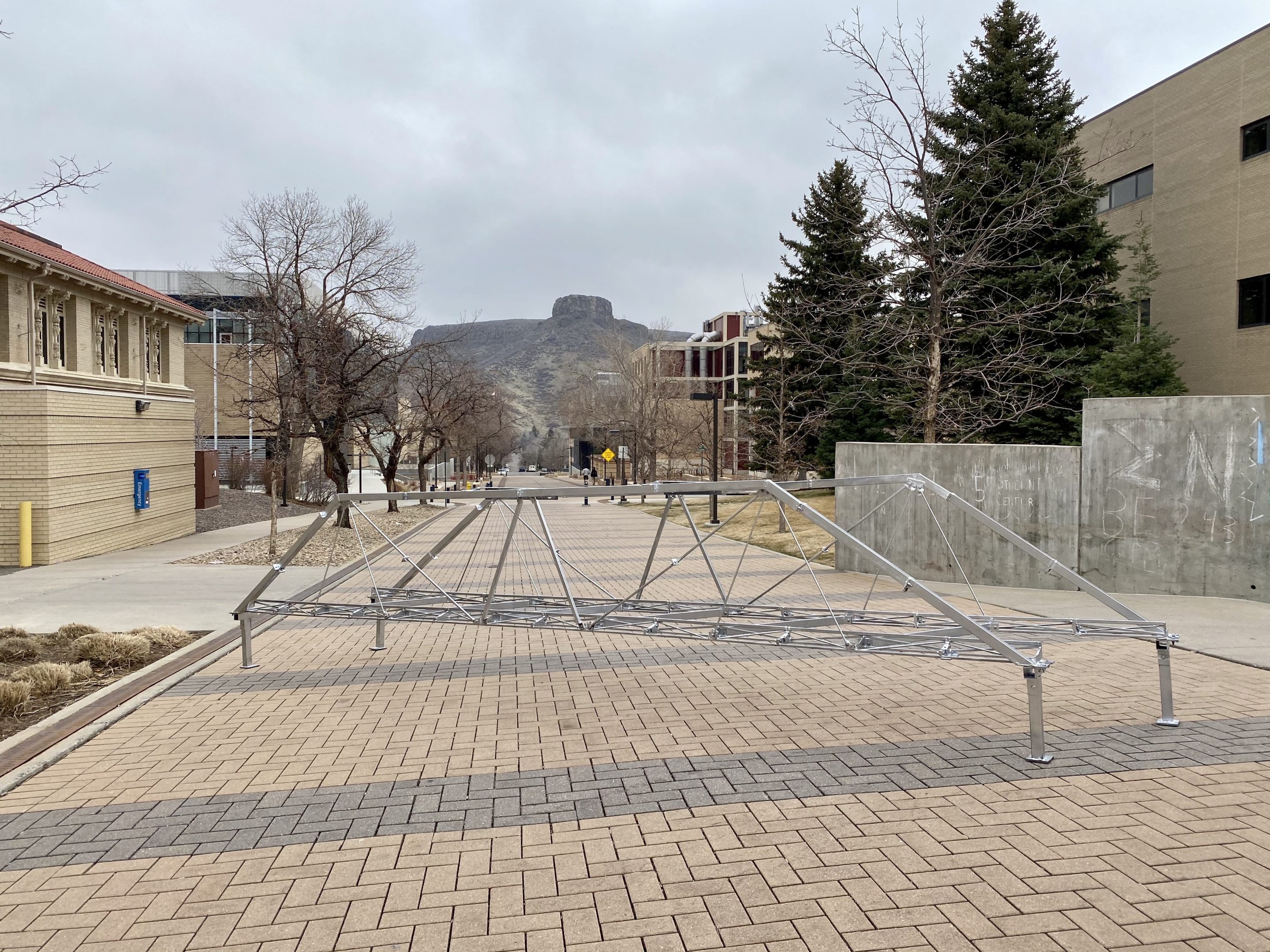
Design Solution
Each year, AISC provides specifications for design, rules, and standards that all bridges competing within the AISC Student Steel Bridge Competition must abide by. In brief, there are requirements for dimensions, assembly, and strength that must be adhered to within the competition. Accordingly, our bridge complies with these standards (for more information, visit aisc.org). AISC provides seven different loading cases (in addition to six partial loading cases derived from these) that are equal in magnitude but different in location. These load cases serve two purposes: one, to analyze the strength of the bridge against vertical collapse and deflection, and two, to analyze the bridge’s capacity to resist lateral deflection. In order to model these variations, a consistent structural system was developed using Risa 3D in order to evaluate a single structure using multiple load cases. The results of a single unity test (from AISC Steel Construction Manual, 15th Edition) is given below.
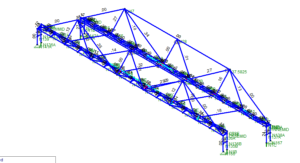
The analysis provides an overview of the functionality of the bridge when facing simultaneous compression and bending, and is one of the 65 analysis tests that the bridge required. The blue signifies a sufficient capacity while the red shows a failing member. For this analysis, all loads are assumed to behave in perfectly elastic members, and so, loads are transferred through members regardless of capacity. The red members in question were modelled as placeholders and serve no structural purpose. The failing placeholder members in question were modelled separately in Solidworks as described in the Design Approach Step 5.
Additional analysis was performed on the shear tab connections in accordance with AISC Steel Manual Chapter J; however, due to COVID-19, the files themselves are saved in an inaccessible location. The analysis was performed by collecting the forces of every connection member and compiling them in a table. From here, the maximum values were obtained, and a conservative edge distance was determined. Unfortunately, COVID-19 also prevented the field-testing of the bridge at both Springfest and Regionals. Because of this, the bridge was never tested beyond the models.
The results of the analysis were positive. The overall weight of the bridge was under 300 LBs (most likely around 275 LBs with the modified members, but the final bridge was never actually weighed given the circumstances), and the maximum aggregate deflection in all of the load cases was approximately 0.5 inches in total (added at two locations). The maximum deformation before disqualification was 4 inches at a single location, and therefore, the bridge function was satisfactory.
The chosen design of the bridge was one that was supposed to be both unique as well as functioning. Since this competition is one that includes numerous schools with somewhat standardized ideas, it is difficult to really stretch engineering knowledge and practice. Therefore, our team selected unconventional designs for stringers, connections, and an over truss as the overarching structural system. The stringer was incredibly difficult to work around due to the constraints of the project; however, it provided an incredibly beautiful design that also adhered to the project requirements. This required unique connections to both be efficient in construction in addition to providing strength (as shown above). The final feature of design, the over truss, was difficult to fabricate; however, it provided aesthetic appeals in addition to vertical stability. Being an over truss, the bridge is naturally more difficult to construct; however, this is offset by the stiffness it provides. The overarching design philosophy of the bridge was to create something unique that was capable of performance.
Next Steps
In an announcement to educators and students, the American Institute of Steel Construction decided to cancel the 2019-2020 Student Steel Bridge Competition. This was in reaction to the COVID-19 pandemic. As a result, the constructed bridge was not officially judged and tested. The first recommendation for this project moving forward is to complete this judging, as to complete the analysis of this bridge with regards to the original problem statement. The purpose of the AISC Regional Competition was to have a performance rating that was given as a hypothetical “construction cost.” Taking into consideration aesthetics, construction speed, lightness, and stiffness, this final judging would best reflect how well the team created a viable solution. It is important to note that, while calculations for the behavior of the bridge under load conditions were modeled, no physical loading was ever done. This leaves a heavy degree of uncertainty, and begs the question as to how the bridge would truly react under actual test conditions.
Further recommendations are focused on structural design and modeling, in which the client or a following team could lead. The connections between members had proved to be a challenge, especially in terms of physical fabrication. The design of this bridge could be improved by creating full models of connections and interfaces, so that structural analyses derived from those models will be more accurate. During fabrication, these interface-points between members were constantly adjusted, and it is strongly advocated to fine-tune with those areas in mind. Overall, improvements to the solution can always be made in every judging category, especially lightness. Again, areas of improvement could be seen more clearly if a proper evaluation occurred.
Meet the Team
Clara Berner
 Clara is an Aquarius. She didn’t know what this means, but it seems to be a thing people put in bios. When she looked it up, it was weirdly accurate. She started attending Mines as a Freshman. Now she is a Senior. For a while she did Choir. Then she quit. Then she did an internship for a semester. Then she was a TA and a Grader. For three years, she competed as a member of Mines Equestrian Team. Horses are cool, but cost money so she took a break. Senior year she focused on classes. She likes reading bad fantasy novels and political philosophy. Don’t judge her too much. She tries. She also has an odd sense of humor but some people find her funny; well, mainly just her girlfriend. She plans on avoiding responsibility as an adult by attending the University of Washington next year. The goal is to obtain a masters in Structural Engineering. This may happen if an existential crisis doesn’t send her into something weird. Like teaching. She leaves you with this profound phrase: Quid Latine dictum sit, altum viditur. May it change your life.
Clara is an Aquarius. She didn’t know what this means, but it seems to be a thing people put in bios. When she looked it up, it was weirdly accurate. She started attending Mines as a Freshman. Now she is a Senior. For a while she did Choir. Then she quit. Then she did an internship for a semester. Then she was a TA and a Grader. For three years, she competed as a member of Mines Equestrian Team. Horses are cool, but cost money so she took a break. Senior year she focused on classes. She likes reading bad fantasy novels and political philosophy. Don’t judge her too much. She tries. She also has an odd sense of humor but some people find her funny; well, mainly just her girlfriend. She plans on avoiding responsibility as an adult by attending the University of Washington next year. The goal is to obtain a masters in Structural Engineering. This may happen if an existential crisis doesn’t send her into something weird. Like teaching. She leaves you with this profound phrase: Quid Latine dictum sit, altum viditur. May it change your life.
James Doyle
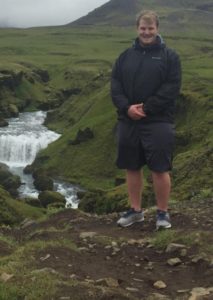 James is a senior studying civil engineering at the Colorado School of Mines with a focus in structural engineering. He is not at all active on the campus and spends his hours and his days wandering about aimlessly doing, well, not much altogether. That is all there is to say about that.
James is a senior studying civil engineering at the Colorado School of Mines with a focus in structural engineering. He is not at all active on the campus and spends his hours and his days wandering about aimlessly doing, well, not much altogether. That is all there is to say about that.
Eli Evers
 Eli is a senior in civil engineering, and is continuing at Mines through December to finish his master’s degree. He is from Sumner, Washington, and is a huge Seahawks and Mariners fan. At Mines, Eli is in leadership positions in Blue Key Honor Society, Structural Engineering Institute Graduate Student Chapter, The Oredigger student newspaper, and The Prospector undergraduate student yearbook. He also is a member of the Mines club tennis team, and plays alto saxophone with the Mines jazz band. Eli works as a TA for civil engineering EPICS and Mechanics of Materials. In his free time, Eli attends almost every home athletic event and is Mines’ self-proclaimed biggest fan. During the past month of social distancing, he has been watching replays of sports games, the original Twilight Zone, Spongebob, and classic movies, and listening to classic rock, hip hop, and jazz albums.
Eli is a senior in civil engineering, and is continuing at Mines through December to finish his master’s degree. He is from Sumner, Washington, and is a huge Seahawks and Mariners fan. At Mines, Eli is in leadership positions in Blue Key Honor Society, Structural Engineering Institute Graduate Student Chapter, The Oredigger student newspaper, and The Prospector undergraduate student yearbook. He also is a member of the Mines club tennis team, and plays alto saxophone with the Mines jazz band. Eli works as a TA for civil engineering EPICS and Mechanics of Materials. In his free time, Eli attends almost every home athletic event and is Mines’ self-proclaimed biggest fan. During the past month of social distancing, he has been watching replays of sports games, the original Twilight Zone, Spongebob, and classic movies, and listening to classic rock, hip hop, and jazz albums.
Gabriel Hegarty
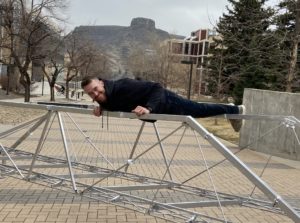 Gabriel will be graduating Summa Cum Laude this May with a bachelors in Civil Engineering. Apart from being on the steel bridge team, Gabriel has volunteered in several ways on campus, including helping plan the steel bridge portion of the 2020 ASCE Rocky Mountain Regional Conference. Gabriel grew up in Arvada, Colorado and in his free time enjoys playing sports, lifting weights, hiking, and spending time with his family. He has accepted a job with Kiewit as a Roadway Enginner and will start designing our nations highways and infrastructure later this summer.
Gabriel will be graduating Summa Cum Laude this May with a bachelors in Civil Engineering. Apart from being on the steel bridge team, Gabriel has volunteered in several ways on campus, including helping plan the steel bridge portion of the 2020 ASCE Rocky Mountain Regional Conference. Gabriel grew up in Arvada, Colorado and in his free time enjoys playing sports, lifting weights, hiking, and spending time with his family. He has accepted a job with Kiewit as a Roadway Enginner and will start designing our nations highways and infrastructure later this summer.
Neil Isales Jr.
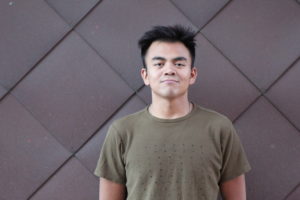 Neil Isales Jr is 21 years old and a Senior in Civil Engineering, graduating in May 2020. Apart from Steel Bridge, he participated in Concert Choir, Mines Little Theatre, and Acts of Random Kindness Society during his time at CSM. He is a paid singer and bass section leader at the Denver Cathedral Basilica of the Immaculate Conception. Neil was born in Manila, Philippines, and moved with his family to Colorado in 2002.
Neil Isales Jr is 21 years old and a Senior in Civil Engineering, graduating in May 2020. Apart from Steel Bridge, he participated in Concert Choir, Mines Little Theatre, and Acts of Random Kindness Society during his time at CSM. He is a paid singer and bass section leader at the Denver Cathedral Basilica of the Immaculate Conception. Neil was born in Manila, Philippines, and moved with his family to Colorado in 2002.
Hayley Siedlik
 Hayley Siedlik is a Senior in Civil Engineering from Omaha, Nebraska. During her time at the Colorado School of Mines she was a part of Mines Little Theater, choir, ASCE, and the AISC Steel Bridge Team. She spent some of her spare time working as an intern and as a desk assistant in the Campus Living Office. In the rest of her spare time she was likely playing board games, working on puzzles, or painting for her bullet journal. After graduating in May 2020 she will be working full-time as a civil engineer in Denver, Colorado.
Hayley Siedlik is a Senior in Civil Engineering from Omaha, Nebraska. During her time at the Colorado School of Mines she was a part of Mines Little Theater, choir, ASCE, and the AISC Steel Bridge Team. She spent some of her spare time working as an intern and as a desk assistant in the Campus Living Office. In the rest of her spare time she was likely playing board games, working on puzzles, or painting for her bullet journal. After graduating in May 2020 she will be working full-time as a civil engineer in Denver, Colorado.
